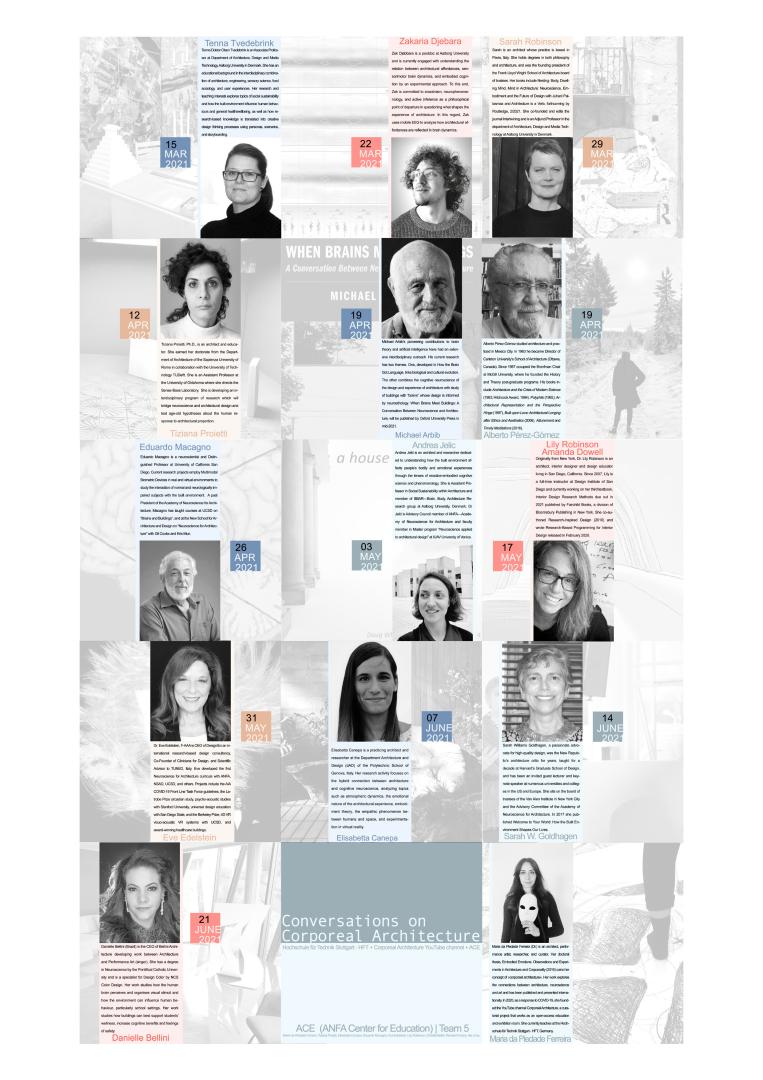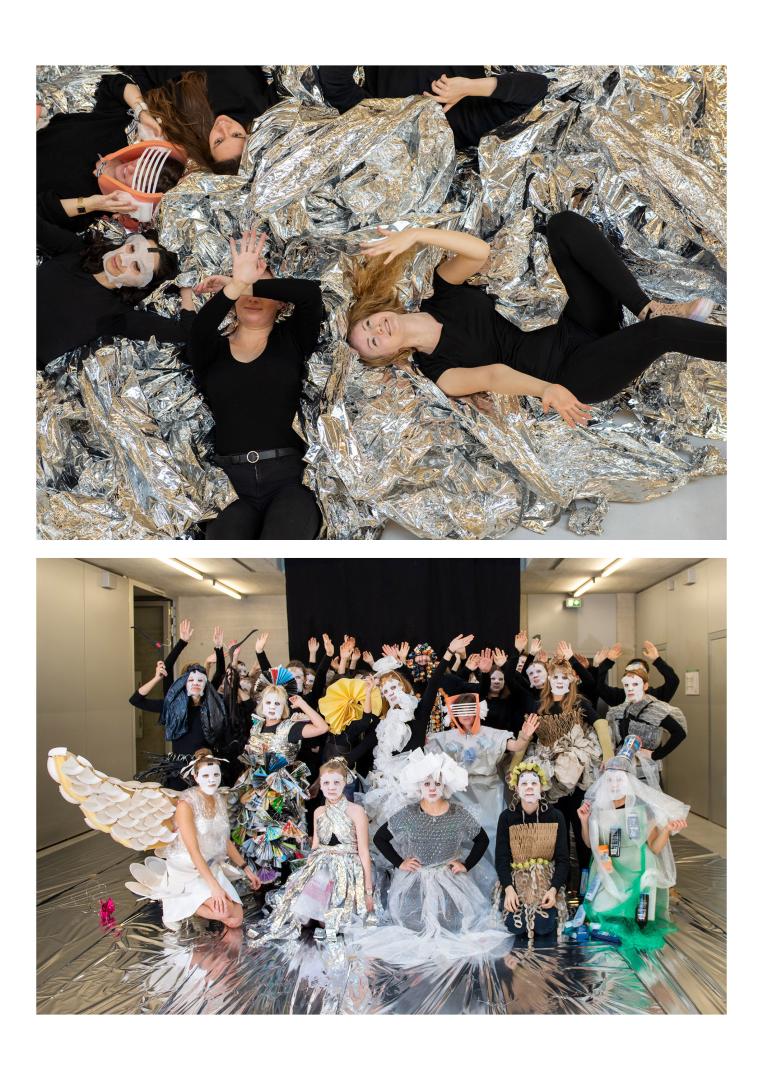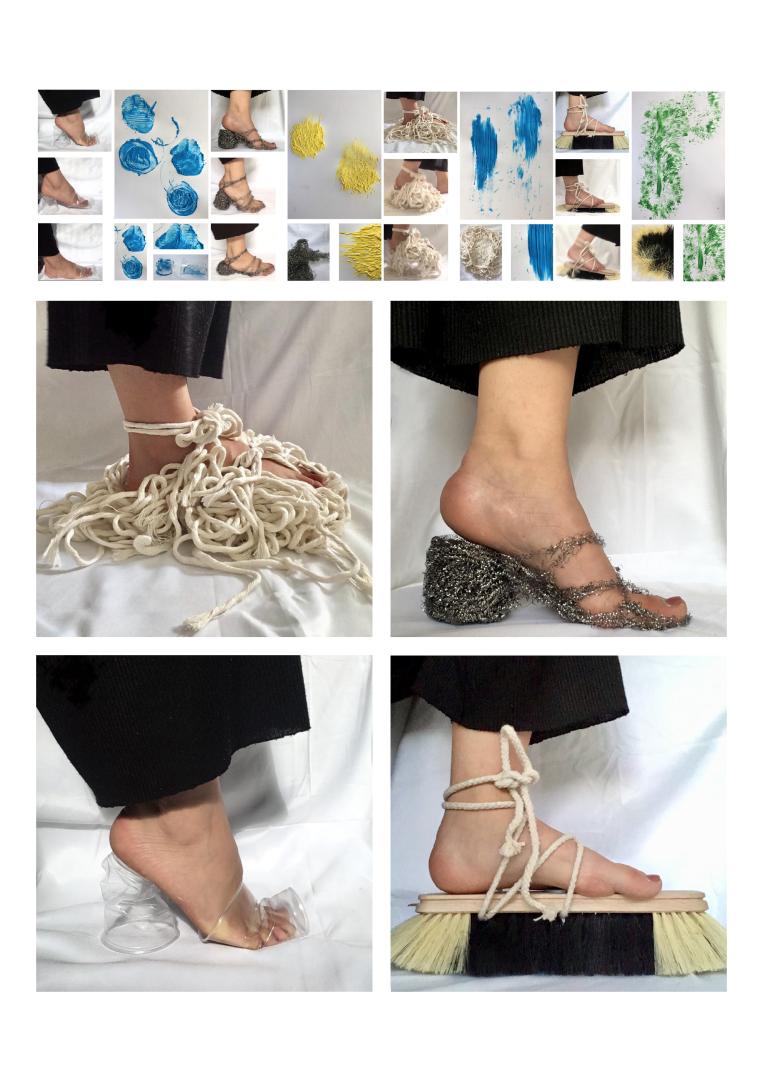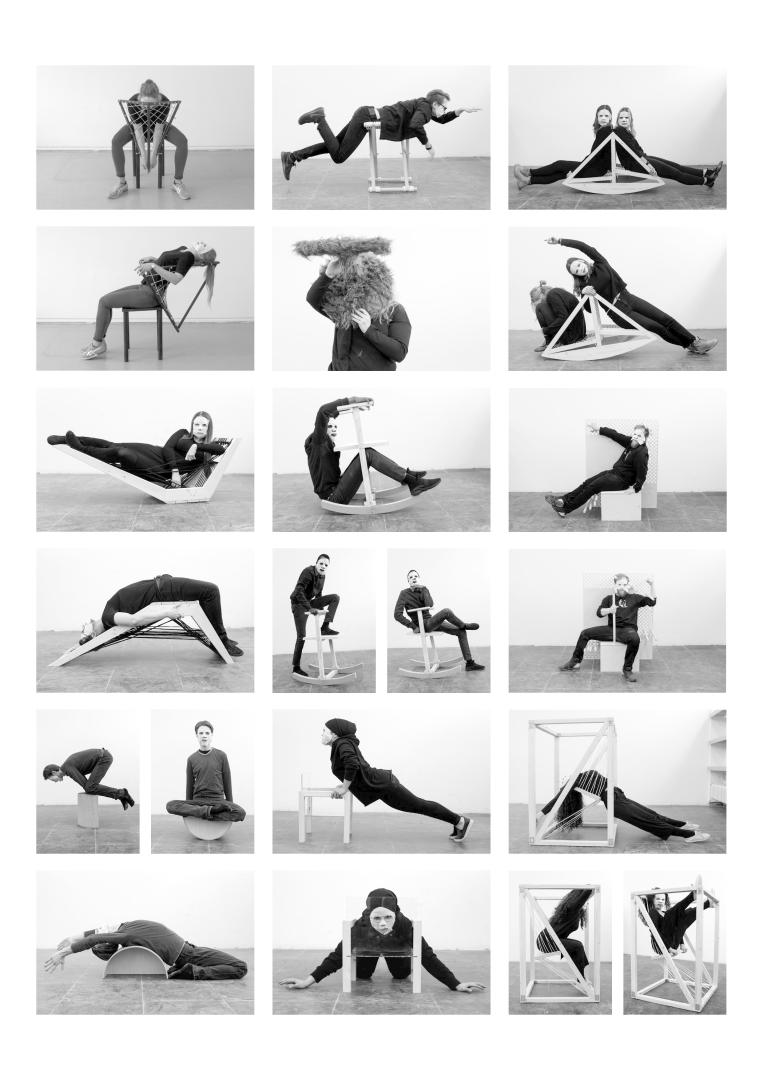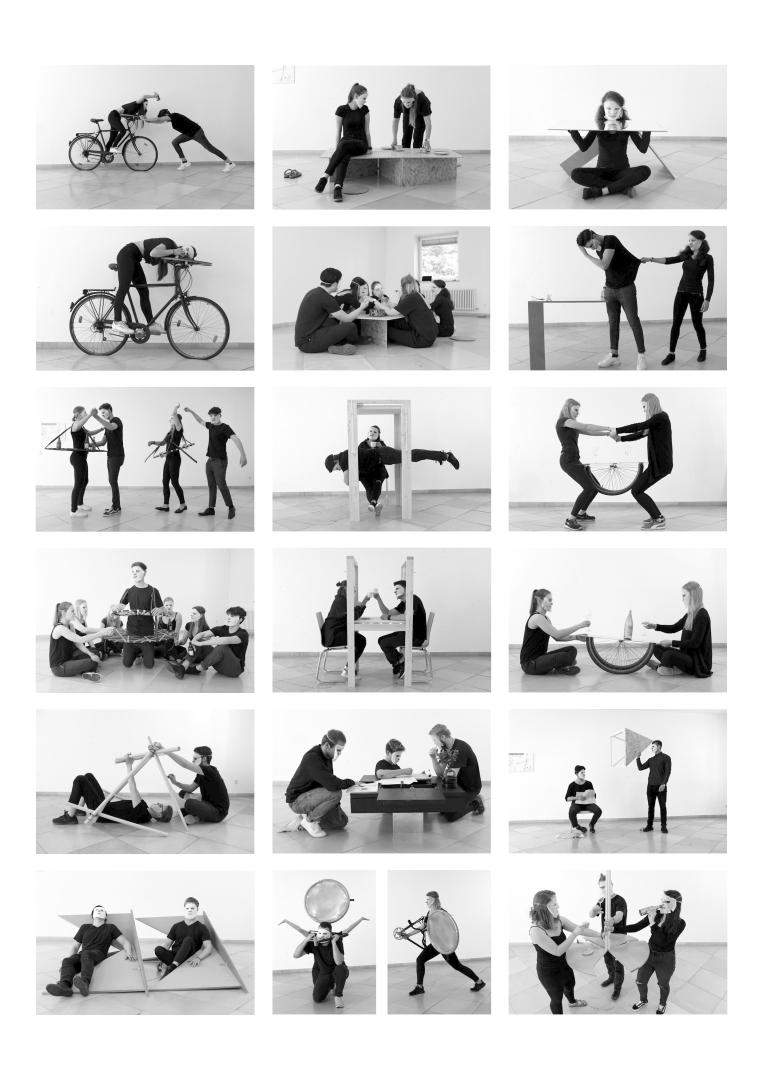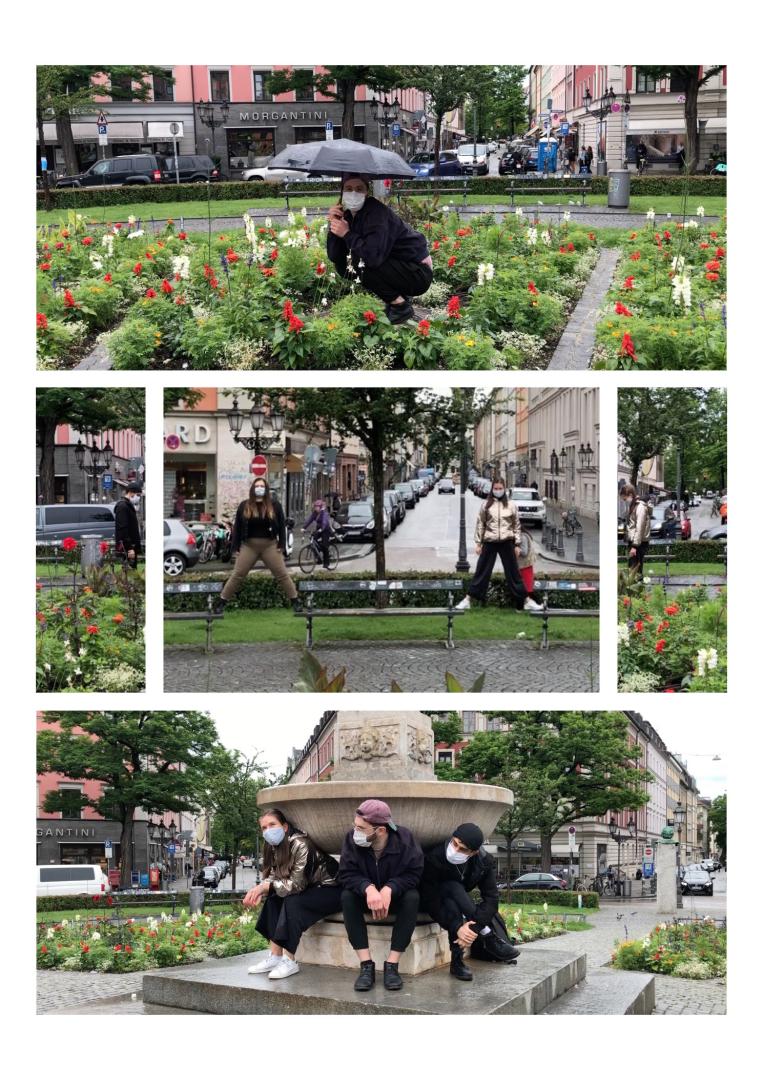Corporeal Architecture
Basic information
Project Title
Full project title
Category
Project Description
Corporeal Architecture is a teaching method taught in partnership with ACE, the Center for Education of ANFA - the Academy of Neuroscience for Architecture, with the aim to apply integrated knowledge from Performance Art and Neuroscience in the design curriculum. The design projects are built with waste material, found objects or/and by appropriating spaces in the city or nature. The resulting lectures, performances, installations and conversations are available to the public on YouTube.
Project Region
EU Programme or fund
Description of the project
Summary
Corporeal Architecture is a teaching method that aims to integrate the embodied knowledge from Performance Art with research findings and theories from the larger field of Neuroscience, as applied to design at different scales: architecture, interior design, urban design and product design. Inspired by the Bauhaus tradition, each design project connects to the human body from the scale of the body itself to the scale of the city. The aim of the design courses is to raise awareness to the importance of designing with a focus on the human body and mind as a holistic whole, and understanding how the ways that we shape our environment shape us in turn, by patterning our habits, thoughts and beliefs. The connection between Performance Art and Neuroscience is productive to explore in a design context since we can understand through science how the human body and brain are connected, as health and well-being are often expressed through movement. Neuroscience findings are helpful to understand better how certain parameters of the built environment such as noise and pollution have a negative impact in the human body. Neuroscience also offers designers a new knowledge foundation which allows us to design for diversity and not for ideal standard bodies, explaining through science the role of emotion and memory in our experiences of connecting to our surroundings. Performance Art gives us many opportunities to use movement and directed action to create situations in which the body interacts with space and design objects, often disrupting usual patterns of thinking and approaching the world. The integration of these disciplines in the context of design education has the potential to create change in the world by expanding our awareness of creative possibilities, and opening the mind to new modes of thinking, appropriating existing materials, spaces and buildings and positively transform the world through an embodied approach to design.
Key objectives for sustainability
The key objectives of Corporeal Architecture in terms of sustainability were to sensitise students to the impact that building has in the carbon footprint and the importance of addressing the built environment as something that can be radically transformed by capitalising what is already there. Applying the Neurosciences concept of neuroplasticity, all design tasks challenged students to shift their perspective and explore the potentials of existing materials, spaces and buildings. Instead of acquiring brand new materials to realise their designs, students were encouraged to work with found objects, waste material from their own consumption or collected. This had the objective to change their perception of waste as something to be rejected, to something which has value and understand how every material can be transformed by proposing new uses and not necessarily by destruction. Students were sensitised to the importance of seeing the built environment as a place which is rich in materials and potential, and how in the future we can design by exploring the properties of each material, building or space until its very last possibility of use, expanding its life cycle. The ultimate goal in terms of sustainability was to break away the old patterns of throw-away culture and explore the creation of an aesthetic that challenges our ideas of value, our perception of what is old and new and joins cultural heritage with innovation.These objectives were met by the implementation of such ideas in design projects which explored through performance and installation how such a de-contextualisation of object, material and human body can introduce new patterns of use and establish positive affective bonds with problematic materials and locations, changing how we perceive and interact with them. The design tasks also encouraged a positive connection to sustainability not as a set of restrictive duties but as a goal that inspires creative action and fun.
Key objectives for aesthetics and quality
The key objective of Corporeal Architecture in terms of aesthetics was to understand how our perceptions and ideas of beauty are not fixed concepts, but are open to continuous evolution and transformation. Corporeal Architecture aimed to present an Avant-garde aesthetic which can radically change what we might perceive as ugly, wasteful or old into something beautiful. This means that the designs could have an unfinished or imperfect look or purposefully show that they incorporated parts of other objects, a mix of natural and artificial materials, and traces of their previous use, telling the story of its life cycle in the design. Some of such design interventions were temporary, inviting further uses and interpretations of the materials, objects, buildings and spaces incorporated. This aesthetic of imperfection aimed to break away ideas that beauty is exclusively associated with luxury, mechanised perfection and with perfect youthful bodies, reflecting our human body’s vulnerability and diversity. In terms of quality of experience, the key objectives were that the designs should be built from the perspective of embodiment, encouraging both action and contemplation. The designs should also manifest a poetic narrative which inspires the users to feel emotionally connected to the design, performance, installation or experience as something that triggers memories and encourages an affective bond. This focus on empathy had the ultimate goal to make the design not only something which is an object for use and acquisition but as a conductor of meaningful experiences, supporting our daily rituals and helping us to create a personal and collective sense of placement in the world. This is especially relevant taking in consideration the high incidence of populations with a migration background, for whom the environment should especially encourage feelings of opportunity, security and belonging.
Key objectives for inclusion
The key objectives of Corporeal Architecture in terms of inclusion were to sensitise students that there is no such thing as a standard human, that we are all diverse with individual requirements and needs. Therefore, each design project invited the reflection on how the built environment needs to take in consideration that not all bodies are equally able, while at the same time the perception of abilities is also personal. Therefore, the concepts of agency and self-determination of citizens were addressed in order that students understand the importance to design objects, buildings and cities that promote the autonomous and meaningful existence of all and that also allow adaptation over time to evolving needs. The Corporeal Architecture project, while working with the somatic techniques of Performance Art and Neuroscience, also encouraged the experience of the body in states of vulnerability, to develop empathy for the user in the design of specific situations, for example, child care, illness, ageing or to actively support people with certain brain conditions such as Alzheimer or Dementia. In such situations, the students were challenged to think about the built environment as something that can promote the resilience of the elderly and encourages both their autonomy and their active participation in civil society. As the use of resources was one of the most important themes in Corporeal Architecture, students were also encouraged to understand how the responsible use of resources encourages a more equal society, while demonstrating that beauty and quality are not signs of luxury and prestige but a basic human right which should be affordable and accessible for all. These objectives were met by the inclusion of bodies of different gender, age, culture, level of fitness and economic power as participants in the design process, contributing with their ideas and involvement in the performance, building or installation of the designs.
Results in relation to category
Corporeal Architecture has changed the way we envision the possibilities for design education. By opening the door to members of the Neuroscience community and integrating methodologies from Performance Art, it was possible to create in the same learning space an exchange of knowledge that truly integrates art, design and science on equal terms. This showed that such experiments in interdisciplinary education models can be successfully repeated and adapted to different teaching contexts, and that it fits to every existing design curriculum, since it takes advantage of already existing structures, while introducing brand new approaches and developing new content. Corporeal Architecture also has the ambition to extend this knowledge to civil society, encouraging further exchange of knowledge and create a critical mass who is sensitised to the importance of sustainability and of the creation of a new aesthetic which supports our life in the future. All work produced by the project is made available to the public through the Corporeal Architecture YouTube channel, including documentation of students’s work with installation and performance, lectures and conversations with specialists. The ideas, experiments and research findings that take place in the context of the Corporeal Architecture project are reported on research papers selected and distributed by the artistic and scientific community and are made available in open-access whenever possible. Finally, the most significant impact of the Corporeal Architecture project is felt by the students, who describe unanimously how their perspective on the importance of the human body in design is expanded, their awareness for the responsible and creative use of resources to reach sustainability goals and how the exposure to knowledge from Performance Art and Neuroscience transformed the way they perceive and experience their own bodies, the built environment and their approach to design.
How Citizens benefit
Most citizens involved in Corporeal Architecture were students who had a fundamental role as co-creators in the project, contributing with their active creative participation in the design, building and performance with the objects, spaces, performances and installations which they developed for the project. Each design task was presented by the teacher with a conceptual framework and taken as the motto for action. This conceptual framework was inspired by identified societal problems, for example, the impact of prolonged sitting in the human body (Mean Chairs and Tricky Tables), the need to re-think how we transform waste material (Wasteland), how the body feels while performing different tasks (Bodyscans) and how daily objects/spaces have a meaning that surpasses their function (Dilemmata). The process of co-creation unfolded as a form of social sculpture, where students contributed with their agency and individuality to propose different design solutions to address the same design task. The impact of the students' involvement in the project as co-creators was expressed in a diversity of solutions which were presented and discussed among the group and to the specialists who, invited by the teacher, have contributed with their knowledge and insight to inspire the designs. These exploratory design solutions were interpreted as seeds for further investigation and students were encouraged to invite their colleagues, friends, family members and neighbours to participate with their creative input at all stages of the design process - design, building and performance. This invited a relationship between designer and user on equal terms, where dialogue, openness and respect are taken as fuel to the creative process. As a final impact, often students’ friends and relatives revealed an enhanced understanding of the importance of knowledge-based design and interest in participating in decision-making and the creation of their built environment.
Innovative character
The project was innovative since Performance Art and Neuroscience aren’t usually taught in the conventional design curriculum. Neuroscience for Architecture, (NfA, as proposed by ANFA - The Academy for Neuroscience for Architecture) has a recent history and Performance Art was only a part of the Design curriculum at the Bauhaus. Corporeal Architecture aimed to re-interpret the Bauhaus tradition - teaching design with a focus on the human body and using performance as a medium to develop the creative potential of students, as important as drawing, model making and other skills. The integration of Neuroscience had the goal to inform with theory the body-focussed aspects of Performance Art, and make students aware that there is knowledge which is changing how we understand the human body and mind and that it can be useful to create objects, buildings, spaces and experiences that reflect different human needs and requirements. The project was also innovative since it encouraged students to perform and prepare their own body with exercises that developed their sensitivity and corporeal awareness. This had the ultimate goal that students learned to use the body as an instrument, which is open to infinite creative possibilities and is able to think as an artist, designer and scientist simultaneously. The Corporeal Architecture project was also innovative, since it extended the classroom space including real and virtual, taking advantage of digital tools to invite international specialists to participate as speakers, allowing the students to benefit from a broad array of perspectives on the themes in discussion which inspire their designs. The project also innovated as it appropriated a mainstream medium such as YouTube to store lectures, conversations and students’ work. The YouTube channel Corporeal Architecture is an Open-access education and exhibition room, extending the knowledge created during the classes to civil society.

